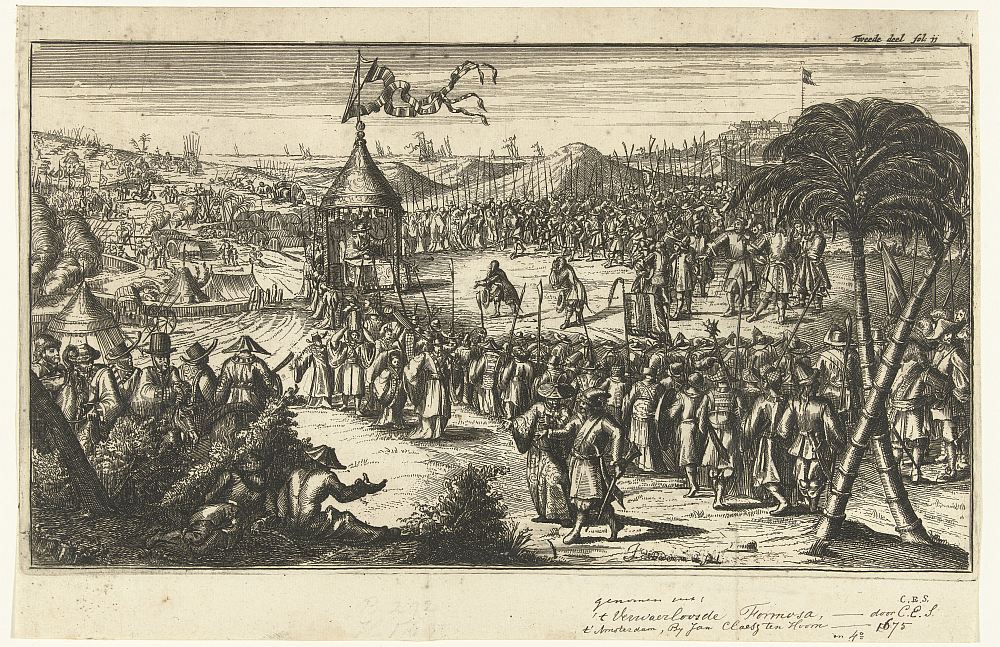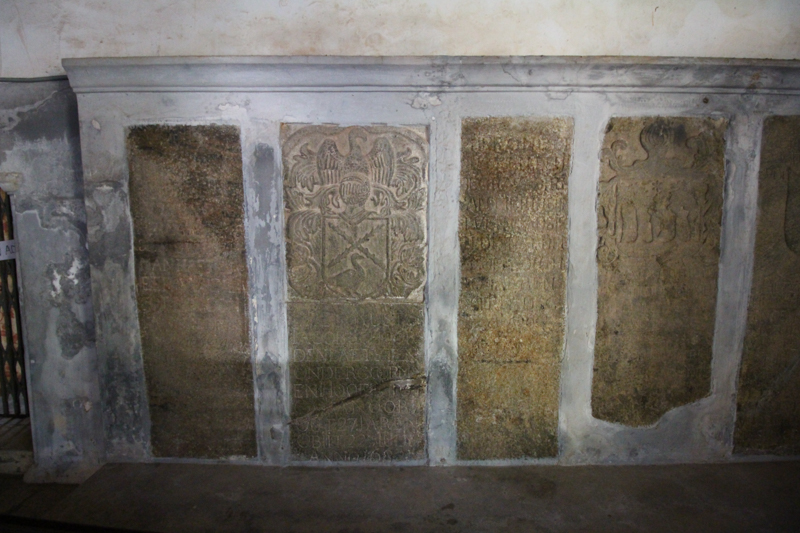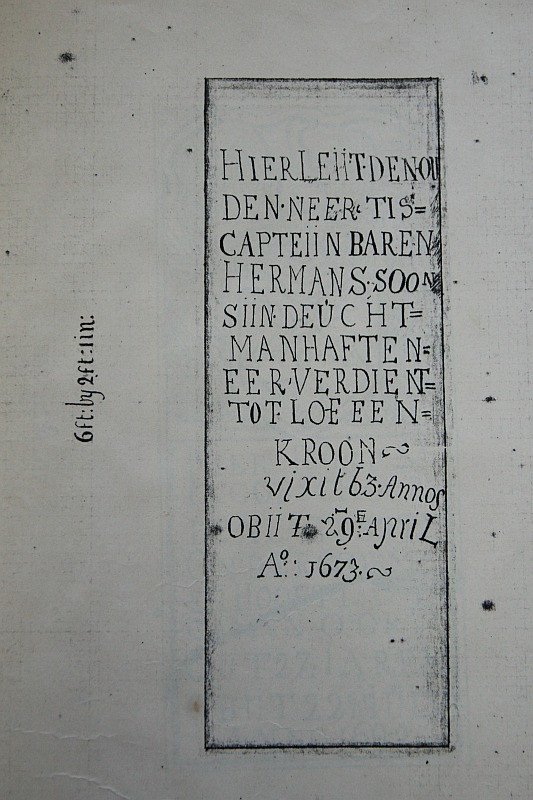Fort Kochi - Barend Hermanssoon
On 22 October 1655, the Zeeland Chamber of the Dutch East India Company (VOC) approved the decision that at least 4,000 men would be transported to the Dutch East Indies with the upcoming winter fleet because of the great lack of personnel.[i] After only a week, they started hiring staff. On November 8, 1655, corporal Barend Hermanszn van Groningen was hired for the ship Ter Tholen with a salary of fourteen guilders per month. Already on the 23rd of November the decision was made to appoint him as a sergeant with a salary of eighteen guilders.[ii].[iii] On 30 December, the drums were beaten to allow the people of the ship Ter Tholen to board, after which they anchored off Vlissingen until favourable weather for departure. On 6 January 1656, skipper Daniel Looper left the roadstead and needed 6 months and 13 days to arrive in Batavia.
At forty-six years old, Barend was no longer a young racehorse, but certainly not at the end of his career. In 1657 it was decided to increase his pay to twenty-two guilders, and in 1658 he was promoted to lieutenant at fifty guilders a month. Partly because of this, he was able to transfer a hundred “rijksdaalders” in 1660 to his wife Christiana Barents, who had stayed behind in the Netherlands.

During the first few years in the east, Barend was mainly mentioned in all kinds of places and ships, moving from one trouble spot to another. In February 1659 he left Colombo, where he was nicknamed "Voorrijder" or outrider. In November of the same year, he was also mentioned in Matapura on Borneo, with the ship Orange in Palembang on Sumatra and on the Bloemendal near Macassar. In July 1660 he was on Sulawesi in the castle of Pannahoekan, known by the Dutch as Panna Koocque Castle. Captain Harman van Outshoorn was in charge and Barend Hermanszn could often be found in his neighbourhood.[iv] The castle had just been conquered and a council had to be set up to assist Van Outshoorn in making important decisions. Among the nine members was lieutenant Barend Hermanszn.[v] He didn't stay here very long either, because the crisis around Formosa (present-day Taiwan) was urgent. In 1624, the Dutch had settled on the small sandbank Tayoan, in the south of Formosa, and built the Zeelandia fortress there. The adjacent city of the same name became a thriving meeting place between Japanese, Chinese and VOC merchants. It became one of the most important trading posts of the VOC. When war broke out in the Chinese province of Fujian between the supporters of the old Ming dynasty and the new Qing dynasty, some 25,000 Ming supporters fled to Formosa. They mostly settled in and around the city of Zeelandia. After the Chinese military leader of the Ming supporters, Guoxingye, called Coxinga by the Dutch, was cornered in 1661, he invaded Taiwan on 30 April of that year with more than 10,000 soldiers. From the second week of May he besieged the Fort and the city of Zeelandia. Many people, including the Dutch, tried to flee the island via the north. Other Dutch people sought refuge in the fort. With nine hundred and five soldiers, sixty-three married men, two hundred and eighteen women and children, and five hundred and forty-seven slaves and slave children, it was overcrowded. One of them was Barend Hermanszn.
There was, under normal occupation, rationed food for about 10 months in the castle, but there was little progress. The situation in the fort can be imagined. It smelled horrible and soon all kinds of serious diseases were rampant. By July, 400 people had already died. In November, a letter from the rulers of the Chinese city of Hockzieuw reached them. They wanted to try to break the siege of the fortress because defeating Coxinga was also important to them.[vi] There was deliberation. Was it better to be bitten by the dog or the cat? The governor consulted with his council, including Barend, and decided to wait a little longer. Eventually, hunger, fatigue and discord set in, and on 18 January 1662 the enemy was seen preparing to "assault on us by storm on one place or another."[vii] It did not come to an immediate attack, but that the "male courage" needed a boost is evident from the promise that every soldier could count on a extra of 2 months' pay in case of heroic behavior and that every officer would rise one rank. Lieutenant Barend thus became captain Barend.[viii]
 The Dutch envoys enter the tent of Koxinga (Rijksmuseum).
The Dutch envoys enter the tent of Koxinga (Rijksmuseum).
On 27 January, Coyett, the governor, after consulting with the entire council, wrote a note to Coxinga that they wanted to negotiate surrender.[ix] Coxinga said they need to send someone to consult verbally. It was decided that the merchant Paulus de Vick and Barend Hermanszn should convey the message that they would be allowed to leave the castle with all their private possessions and the possessions of the VOC on conditions of free retreat.[x] According to Coxinga, there was no more in it than that they left and would leave everything behind. Paulus Vick and Barend Hermanszn went back and forth a few more times, but they got not much more than the promise that they could also take most of the papers with them and a small sum of money per person. As a sign of surrender, Coxinga demanded that they fly two white flags and two Chinese banners. The surrender would follow on 1 February. Both sides were assigned two hostages to ensure that the agreement was carried out as settled upon. Coxinga's two hostages were housed on the ship Naarden, which was in the roadstead and Barend will keep them company there, together with sentries at the door of their cabin. This was not the end of the matter. The Supreme Council of the Dutch East Indies was furious about the surrender and filed a lawsuit against everyone they hold liable for "the loss of the fortress Zeelandia on Taijouan to the murderous pagans of the mandarin Coxinga, but also of all cash, securities and merchants, nothing except for having done "goods and blood coral" without failure to save the business.[xi] In the end, all members of the Council were cut on their salaries for six months. It had no further effect on Barend's career.
 The tombstone of Barend Hermanssoon is the first on the left (photo René ten Dam, 2020).
The tombstone of Barend Hermanssoon is the first on the left (photo René ten Dam, 2020).
Less than a year later, Rijcklof van Goens captured Cochin on the coast of Malabar and Barend was among the troops. He was now fifty-three years old and had already seen much of Asia. For the first few years, he worked as a lieutenant in Cananoor. Actually, he had been promoted to captain, but there was no vacancy for that. He was, however, head of the militia there. On 22 March 1665 he received a house and yard in the Rechtestraat block J number 1 by means of a letter of gift. There are indications that he remarried to Christina de Ruijt. In 1668 it was decided that "the old Barent, the outrider" who had been captain by provision, was incapable of functioning in the field because of his age. Slowly but surely, his name is less and less to be found. He was sometimes mentioned as a witness, such as in 1670 when a boat was rowed back and capsized, losing all mail. On 29 April 1673, he died in Cochin. Due to the lack of sources, we know almost nothing about Barend's private life, other than he always signed as Berent Hermans. Yet there was someone in his life who was close enough to him to have a stone made for his grave. Had his wife followed him? Had he found a new love? In 1677 Christina de Ruijt, widow of the Noble Manhafte captain Barent Hermans, lent money to the widow of Jacob Cauw. Barent and Jacob were together in Taiwan. There is an answer somewhere, we just have to find it.
 Transcript of the tombstone of Barend Hermanssoon.
Transcript of the tombstone of Barend Hermanssoon.
Notes
[i] NA 1.04.02.7247_0176
[ii] NA 1.04.02.7247_0182
[iii] NA 1.04.02.7247_0185
[iv] Harmen van Oudthoorn, came out in 1642 as a corporal of the midshipmen. He was promoted to sergeant in 1643, ensign in 1645, lieutenant in 1649, captain-lieutenant in 1652 and captain in 1657. He arrived at Tayouan on 12 August 1661 in the position of commander of the soldiers in Cauw's fleet. Subsequently, he is captain of Zeelandia.
[v] NA 1.04.02.1232_0742
[vi] NA 1.04.02.1238_0783
[vii] NA 1.04.02.1238_0844
[viii] NA 1.04.02.1238_0851
[ix] NA 1.04.02.1238_0865
[x] NA 1.04.02.1238_0866
[xi] NA 1.04.02.9290_0195
Sources
- Dagregisters Taiwan 1624-1662
- Andrade, Tonio; De Val van Formosa, Hoe een krijgsheer de VOC versloeg, 2015
- Last updated on .


